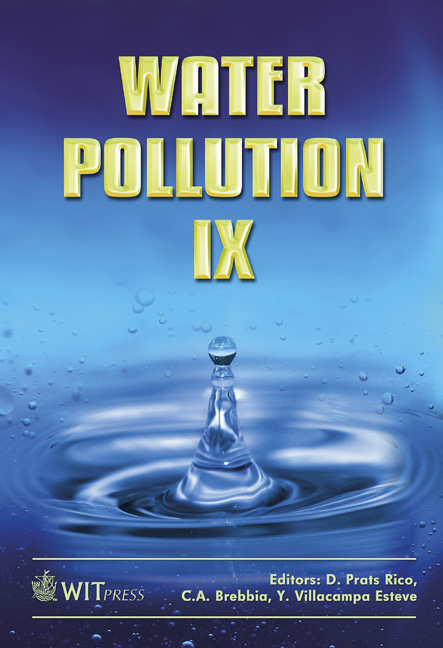Dynamic Nutrient Modelling Of A Large River Basin In Finland
Price
Free (open access)
Transaction
Volume
111
Pages
9
Page Range
53 - 61
Published
2008
Size
1,169 kb
Paper DOI
10.2495/WP080061
Copyright
WIT Press
Author(s)
Ä. Bilaletdin, H. Kaipainen & T. Frisk
Abstract
The Baltic Sea is one of the most eutrophied European seas. High nutrient input mainly via river discharges and leaching from agriculture along with the reduced water exchange with the open ocean have, during past decades, led to enhanced growth and biomass of primary producers. Characterized by a large catchment area, pollution that originates from land finally ends up in the Baltic Sea. The nutrient loading from the Kokemäenjoki river basin (27000 km2) was simulated by applying different mathematical models. Phosphorus and nitrogen loading from the Kokemäenjoki river basin to the estuary was estimated by calculating nutrient loading from point and diffuse sources using the CATCHLOAD model and by calculating retention in rivers and lakes using the CHAIN-LAKE model. Simulated nutrient fluxes are finally the input data for an estuary model. Two nutrient reduction scenarios, based on requirements of the current environmental policy have been carried out: 1) waste water scenario which is based on the implementation of the EU directive for N removal from inland wastewater treatment plants, and 2) diffuse pollution scenario from agricultural areas which is based on good management practices of the Finnish Agri-Environmental Programme. In the waste water (WW) scenario, N removal efficiency on the major waste water treatment plants of Tampere would rise from 40% to 70%. In the agricultural scenario (AGRI), total P load would decrease by 20% and total N by 37% from fields to the river. The scenarios affected the annual nutrient output from the Kokemäenjoki river by reducing total N on an average by 4% (WW), and total N by 7% and total P by 6% (AGRI). If a total nitrogen reduction of 70% were required the loading of nitrogen to the Baltic Sea would not decrease much. From the point of view of Baltic Sea protection, special attention should be paid to coastal river basins, where water protection measures could be concentrated on selected land use forms with high nutrient loading. Keywords: nutrient, loading, modelling, phosphorus, nitrogen, catchment, Baltic Sea.
Keywords
nutrient, loading, modelling, phosphorus, nitrogen, catchment, Baltic Sea.





